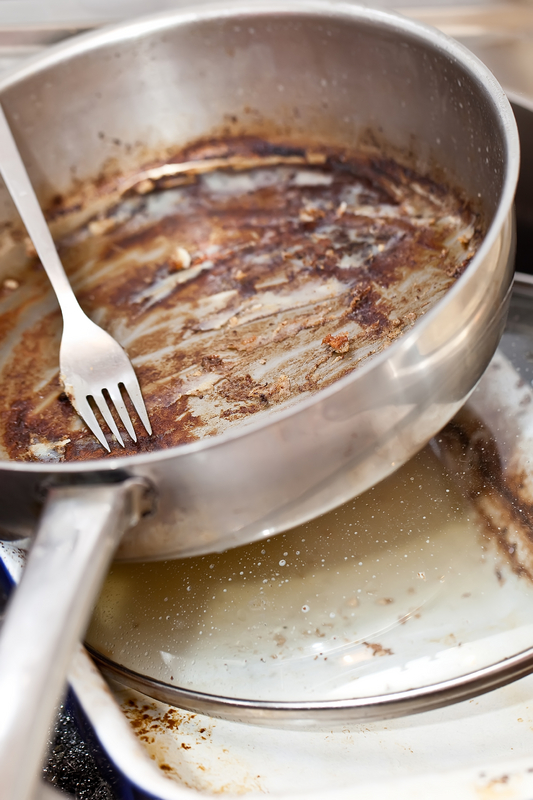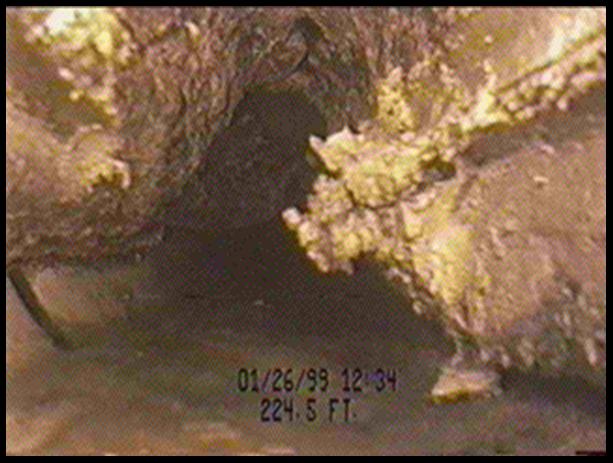Sloppy Kitchen Grease Creates Soapy Sewer Stalactites

Next time you're about to pour that extra cooking grease down the drain, you might want to think first: In the sewers below, the grease transforms into hardened deposits of soaplike chemicals that can cause serious headaches for sewer maintenance workers and can pose environmental and health hazards by causing sewer overflows.
Study researcher Joel Ducoste, of North Carolina State University, and his team have discovered that in the sewers fat, oil and grease turn into hardened deposits of a soaplike substance as they travel from your home to the wastewater treatment plant. The grayish white deposits, which can look like stalactites (pointy structures that hang from the roofs of caves) and are about the consistency of household bar soap and contribute to sewer overflows by blocking drainage.
Overflowing sewers can cause environmental and public health problems and lead to costly fines and repairs. If you ask your local government, these deposits would definitely fall in the top three sewer problems they face, Ducoste said.
Greasy discharges

The grease in question comes from households and restaurants. Citizens are routinely asked to dispose of their cooking grease, oil and fat in the trash instead of the sink, but even in the most conscientious households, some usually manages to slip out with the wash water.
"People try to discharge their oil and grease properly, but over time, you can get a fair amount of oil and grease from washing pots, pans and dishware," Ducoste told LiveScience. "The cumulative impact could be substantial. It's that long-term consistent discharge of that oil and grease, even if it’s a small amount at a time, which could lead to problems."
The problem gets worse in areas with high populations or large numbers of restaurants. Ultimately, Ducoste said in a statement, "if we know how -- and how quickly -- these deposits form, it may provide scientific data to support policy decisions related to preventing sewer overflows."
Sign up for the Live Science daily newsletter now
Get the world’s most fascinating discoveries delivered straight to your inbox.
"Grease is a significant contributor to sewer blockages and sewer backups," Donald Smith, Utility Pretreatment Manager in the town of Cary, N.C., told LiveScience. Cary has implemented programs to curb greasy buildup in their sewers, including requiring appropriate grease control by local restaurants and in July 2009 starting a curbside grease collection program, which collects cooking grease, oils and fats from homes in the community and turns them into bio-fuel.
"We definitely make efforts to try to minimize or reduce the opportunity for these accumulations to occur," Smith told LiveScience. "We have seen a significant reduction in the number and severity of sewer blockages caused by grease."
Soapy sewers
In the lab, Ducoste and his colleagues bombarded deposits that they had collected with infrared light to determine what they were made of. They saw that the hardened deposits were made of calcium-based fatty acid salts -- chemicals more commonly known as soap, but not the kind most people usually think of when hearing the word.
"The truth of the matter is, it sounds like it should be clean stuff going down there because you hear [the word] soap, but it's just a description of a chemical compound," Ducoste told LiveScience. "Make no mistake; they are not something that you could use to wash yourself."
The deposits are formed when the greasy stuff is broken down into its individual parts -- free fatty acids and glycerol. The fatty acids create the soap compound when they meet up with calcium in the sewer pipes. "Until this point, we did not know how these deposits were forming -- it was just a hypothesis," Ducoste said in a statement. "Now we know what's going on with these really hard deposits."
The researchers are now determining where the calcium in the collection system is coming from, and how quickly these deposits actually form. Once they've resolved those questions, Ducoste said, they may be able to predict where a sewage system may have "hot spots" that are particularly susceptible to these blockages.
The research will be published in a future issue of the journal Environmental Science & Technology.
You can follow LiveScience staff writer Jennifer Welsh on Twitter @microbelover. Follow LiveScience for the latest in science news and discoveries on Twitter @livescience and on Facebook.
Jennifer Welsh is a Connecticut-based science writer and editor and a regular contributor to Live Science. She also has several years of bench work in cancer research and anti-viral drug discovery under her belt. She has previously written for Science News, VerywellHealth, The Scientist, Discover Magazine, WIRED Science, and Business Insider.










